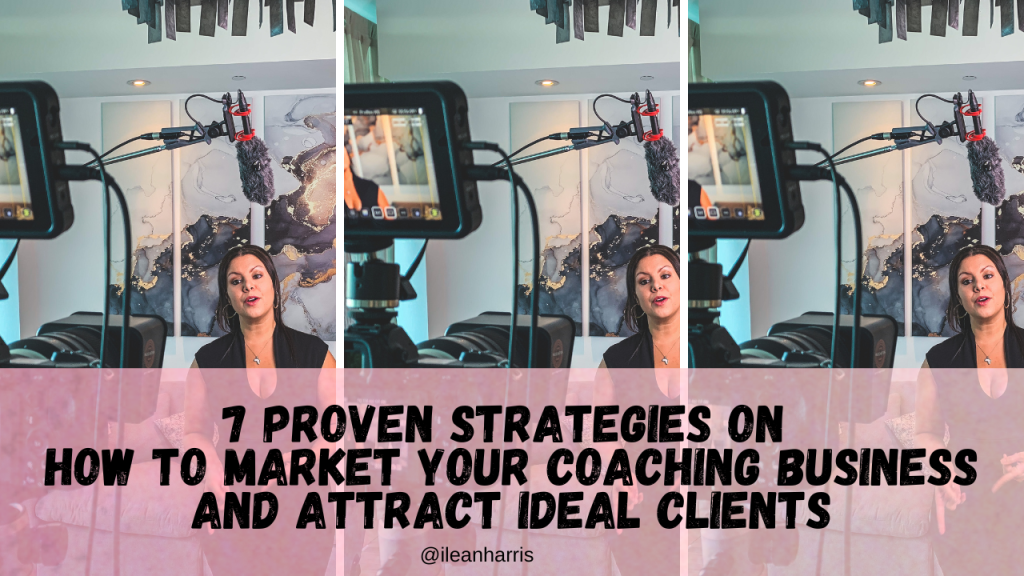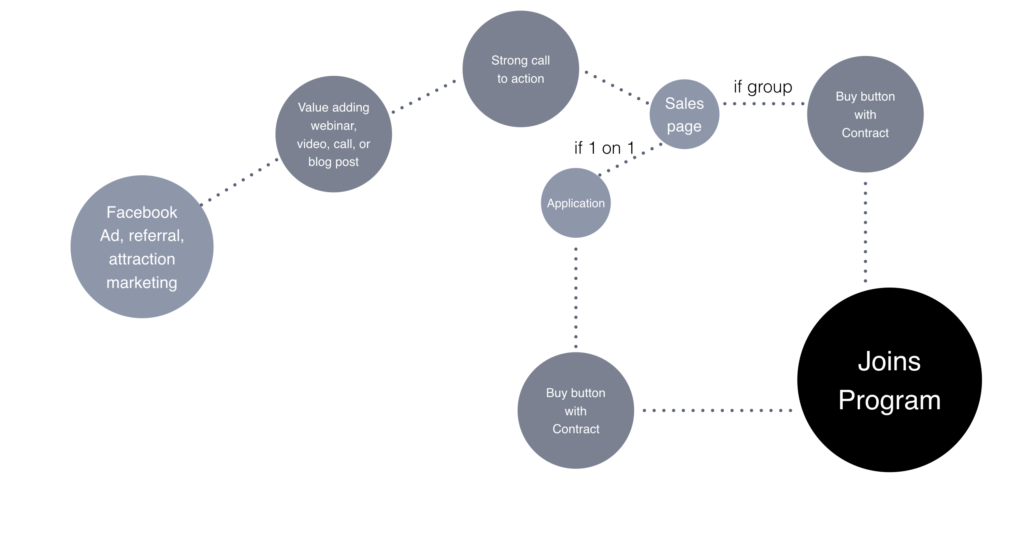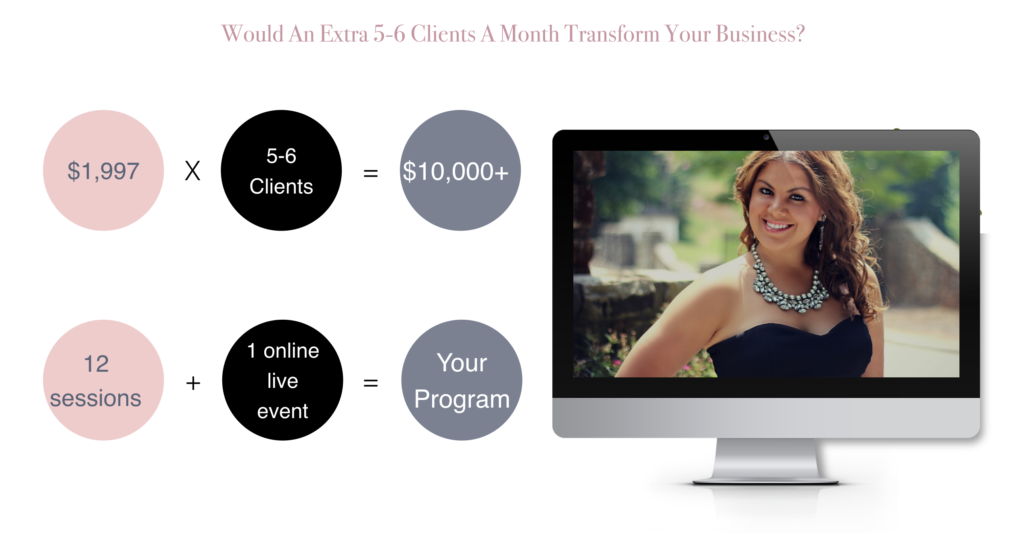This post is all about how to market your coaching business.
Are you tired of struggling to attract the right clients to your coaching business?
Do you feel like you’ve tried everything, but nothing seems to work? You’re not alone.
Marketing your coaching business can feel like an uphill battle, especially when you’re trying to stand out in a crowded market.
But don’t worry – I’ve been there, and I’ve helped coaches just like you in over 20 countries to not only survive but thrive.

In this blog post, I’m going to share with you seven proven strategies on how to market your coaching business and attract ideal clients.
These strategies are designed to help you create a high-ticket coaching package that gets results, add value through webinars, promote your brand on social media, use social media ads effectively, automate your evergreen webinars, follow up with email marketing, and leverage remarketing ads.
So, let’s dive in!
7 Proven Strategies on How to Market Your Coaching Business and Attract Ideal Clients
1. Create a High-Ticket Coaching Package That Helps People Get Results
The first step in marketing your coaching business is to offer a high-ticket coaching package.
Why high-ticket? Because it positions you as an expert, attracts serious clients, and ensures you are compensated fairly for your time and expertise.
Here’s how to create one:
- Identify Your Niche: Focus on a specific area where you can provide exceptional value. This could be business coaching, life coaching, health coaching, etc.
- Understand Your Ideal Client: Know their pain points, desires, and goals. What keeps them awake at night? What do they want to achieve?
- Design a Comprehensive Program: Offer a structured, results-oriented program that includes one-on-one sessions, group coaching, resources, and support materials.
- Set Clear Goals and Outcomes: Ensure your clients know what they will achieve by the end of your program. This builds trust and sets clear expectations.
- Price It Right: Don’t undersell yourself. High-ticket prices reflect the value and results your clients will receive.
By creating a high-ticket coaching package, you’re not just selling your time; you’re selling a transformation. And that’s what clients are willing to pay for.
2. Add Value Via Webinars
Webinars are a fantastic way to showcase your expertise, provide value, and build trust with potential clients.
Here’s how to do it effectively:
- Choose a Hot Topic: Pick a topic that addresses a major pain point for your audience. It should be something they are eager to learn about.
- Deliver High-Quality Content: Share actionable insights and strategies that your audience can implement right away. Make sure your content is engaging and valuable.
- Interact with Your Audience: Use Q&A sessions to address specific questions and concerns. This builds rapport and trust.
- Call to Action: At the end of your webinar, invite participants to book a discovery call or sign up for your coaching program. Make it easy for them to take the next step.
Webinars not only help you demonstrate your expertise but also allow you to connect with potential clients on a deeper level.
Even a new person can do this!
My client made $2,000 on her first webinars which was key for her goal on how to get coaching clients online!
3. Promote Your Brand on Social Media
Social media is a powerful tool for promoting your coaching business and building your brand. Here’s how to use it effectively:
- Choose the Right Platforms: Focus on platforms where your ideal clients hang out. LinkedIn is great for business coaching, Instagram for lifestyle coaching, etc.
- Create Consistent Content: Share valuable content regularly. This could be tips, success stories, behind-the-scenes looks, and more. Consistency is key.
- Engage with Your Audience: Respond to comments, join conversations, and build relationships. Engagement increases your visibility and credibility.
- Showcase Testimonials: Share success stories and testimonials from past clients. This builds social proof and trust.
By promoting your brand on social media, you can reach a larger audience and establish yourself as an authority in your niche.
4. Promote Your Webinars Via Social Media Ads
Once you’ve created a valuable webinar, it’s time to promote it using social media ads. Here’s how to do it:

- Create Compelling Ads: Use eye-catching visuals and persuasive copy to grab attention. Highlight the benefits of attending your webinar.
- Target the Right Audience: Use the targeting features of platforms like Facebook and Instagram to reach your ideal clients. You can target based on interests, demographics, behaviors, and more.
- Use Retargeting: Show ads to people who have visited your website or engaged with your content but haven’t signed up for your webinar. This can significantly increase your registration rate.
- Track and Optimize: Monitor the performance of your ads and make adjustments as needed. Look at metrics like click-through rates, conversion rates, and cost per conversion.
Promoting your webinars via social media ads can drive a significant amount of traffic and registrations, helping you build your email list and attract potential clients.
5. Automate Your Evergreen Webinars
Evergreen webinars are pre-recorded webinars that run on autopilot.
They allow you to continuously provide value and attract leads without having to be live all the time. Here’s how to set them up:
- Record a High-Quality Webinar: Make sure your evergreen webinar is just as engaging and valuable as a live one. Use professional equipment if possible.
- Choose an Evergreen Webinar Platform: There are several platforms that allow you to automate webinars, such as WebinarJam, EverWebinar, and Demio.
- Set Up Automated Reminders: Schedule email reminders to go out before the webinar starts, ensuring attendees don’t forget to join.
- Include a Strong Call to Action: Just like with live webinars, make sure you have a clear call to action at the end, such as booking a call or signing up for your program.
By automating your webinars, you can continuously attract and nurture leads without having to repeat the same process over and over.
6. Follow Up with Email Marketing
Email marketing is a powerful way to nurture leads and convert them into clients.
Here’s how to do it effectively:
- Build Your Email List: Use lead magnets like free guides, checklists, or webinars to grow your email list.
- Segment Your List: Segment your email list based on where subscribers are in their journey. This allows you to send more personalized and relevant emails.
- Create a Nurture Sequence: Develop a series of emails that provide value, build trust, and gently nudge subscribers towards taking the next step.
- Include Clear Calls to Action: Every email should have a clear call to action, whether it’s booking a call, signing up for a webinar, or downloading a resource.
Regularly communicating with your email list keeps you top of mind and builds a relationship with your audience.
7. Follow Up with Remarketing Ads
Remarketing ads are a great way to stay in front of people who have already shown interest in your coaching business. Here’s how to use them:
- Install Tracking Pixels: Use platforms like Facebook and Google to install tracking pixels on your website. This allows you to track visitors and show them targeted ads.
- Create Relevant Ads: Show ads that are relevant to the actions people have taken. For example, if someone visited your webinar registration page but didn’t sign up, show them an ad reminding them to register.
- Use Multiple Touchpoints: Create a series of ads that address different stages of the buyer’s journey. This keeps your brand top of mind and increases the chances of conversion.
- Monitor and Adjust: Regularly review the performance of your remarketing ads and make adjustments as needed to improve results.
Remarketing ads help you stay engaged with potential clients and gently guide them towards making a decision.

Final Thoughts: Stay Positive and Start Where You Are
Marketing your coaching business can feel overwhelming, but remember, every successful coach started where you are now.
The key is to take consistent, intentional steps towards your goals. Start with one strategy, master it, and then move on to the next. Celebrate your wins, no matter how small, and learn from your setbacks.
You have the expertise, the passion, and the drive to succeed.
By implementing these seven proven strategies, you can attract your ideal clients and build a thriving coaching business. Stay positive, stay focused, and most importantly, stay true to your mission of helping others achieve their goals.
Remember, I’m here to help you every step of the way. If you have any questions or need further guidance, don’t hesitate to reach out. Together, we can make your coaching business a success.
Happy coaching!
This post was all about how to market your coaching business.





